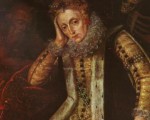
On this day in history events for week 21-27 March.
[Read More...]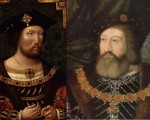
King Henry VIII held a great love of jousting. As a young teenager Henry had been denied the ability to joust in competitions as he was the sole heir to the throne. His father, Henry VII, feared his son may be injured or even worse killed. Yet when Henry came to the throne in 1509 he was extremely athletic and quickly took to the excitement and chivalry of the joust.
Throughout the early years of his reign Henry VIII participated in many fabulous jousting events, one of those being on 10th March 1524. However, the joust this day would not go as planned for the King and he faced a near disaster, one which could have ended his life.
[Read More...]
On this day in history, 9th March 1566, David Rizzio (Riccio), the private secretary of Mary, Queen of Scots, was stabbed to death in front of a heavily pregnant Queen Mary.
But who was David Rizzio and what led to his murder?
John Guy, historian and author of the excellent “My Heart is My Own: The Life of Mary Queen of Scots”, describes David Rizzio as a “young Piedmontese valet and musician, who had arrived in the suite of the ambassador of the Duke of Savoy and stayed on as a bass in Mary’s choir”. Mary obviously took a liking to Rizzio because in late 1564 she chose him to replace her confidential secretary and decipherer, Augustine Raulet, who was a Guise retainer and the only person who Mary had trusted with a key to the box containing her personal papers. Raulet, for some reason, had lost her trust.
[Read More...]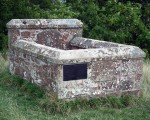
On 27th February 1545, the English forces were defeated by the Scots at the Battle of Ancrum Moor, near Jedburgh in Scotland.
The battle was part of the 1543-1550 War of the Rough Wooing, a war attempting to put pressure on the Scots to agree to a marriage match between the infant Mary, Queen of Scots and Henry VIII’s son, Edward (the future Edward VI).
[Read More...]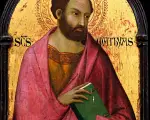
In the medieval and Tudor era the feast of St Matthias the Apostle was celebrated on 24th February, whereas today it is celebrated on 14th May. I have read also that the feast was celebrated on 25th February in Leap Years so perhaps I ought to be actually posting this tomorrow!
Matthias was not one of the original twelve apostles, he was chosen after the Ascension of Jesus by the remaining eleven apostles to replace Judas Iscariot. Why was it important to replace Judas? The Catholic Online website explains: “Twelve was a very important number to the Chosen People: twelve was the number of the twelve tribes of Israel. If the new Israel was to come from the disciples of Jesus, a twelfth apostle was needed.” The Book of Acts explains what happened:
[Read More...]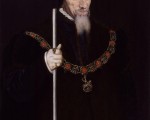
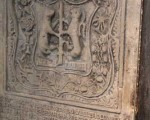
Today has gone down in history as the anniversary of the execution of Lady Jane Grey, but she wasn't the only one executed that day, her husband, Lord Guildford Dudley, was also executed.
Guildford was born in around 1535 and was the fourth surviving son of John Dudley, Duke of Northumberland, and his wife Jane (née Guildford). Guildford's family had negotiated for him to marry Margaret Clifford, daughter of Henry Clifford, 1st Earl of Cumberland, but on 25th May 1553 he married Lady Jane Grey, in a triple marriage ceremony which also saw his sister Katherine marrying Lord Henry Herbert, son of the Earl of Pembroke, and Jane's sister Katherine marrying Lord Henry Hastings. They got married at the Dudley family's London residence, Durham Place.
[Read More...]
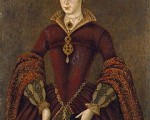
On this day in history, Lady Jane Grey and her husband, Lord Guildford Dudley, were executed for treason.
[Read More...]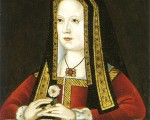
On 11th of February 1466, Elizabeth of York was born at the Palace of Westminster. Exactly thirty seven years later, at the Tower of London, Elizabeth died shortly after giving birth to her last child.
Elizabeth of York was the eldest child of King Edward IV and his wife Queen Elizabeth Woodville. Elizabeth was christened in St Stephen’s Chapel in Westminster Abbey. Jacquetta of Luxembourg, Duchess of Bedford, and Cecily Neville, Duchess of York, stood as her godmothers and Richard Neville, Earl of Warwick, stood as her godfather.
[Read More...]
Just to let you know that this programme is on at 9pm on Wednesday (10th February) on the UK’s BBC Four channel. Here’s the blurb:
“Vanessa Collingridge examines the life of Elizabeth Tudor, with particular interest in how documentary television and the BBC has examined her legacy….”
[Read More...]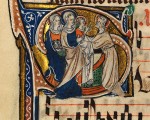
Candlemas, or the the Feast of the Presentation of Christ in the Temple and the Purification of the Blessed Virgin, is celebrated on 2nd February. It commemorates the purification (or churching, as medieval people would have seen it) of the Virgin Mary forty days after the birth of Jesus Christ, when it was traditional for the mother to make an offering or sacrifice according to Jewish law, and the presentation of the baby Jesus at the temple in Bethlehem.
[Read More...]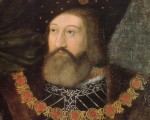
On Candlemas Eve,* 1st February 1514, Henry VIII formally elevated two men to the title of Duke. Charles Brandon, formerly Viscount Lisle, was created Duke of Suffolk, and Thomas Howard, Earl of Surrey, was created 2nd Duke of Norfolk. The ceremony took place at Lambeth and was conducted by the King.
Along with the nearly created Dukes of Suffolk and Norfolk, the only other duke in the Kingdom was Edward Stafford, Duke of Buckingham. Buckingham was a descendent of Thomas Woodstock, youngest son of Edward III. In addition to this, his mother was Katherine Woodville, sister of the late Queen Elizabeth Woodville, wife of King Edward IV. At the time, Buckingham was also the richest peer in England, with an annual income of around £6000 per year (£2,902,620.00) as well as being High Steward of England and a Privy Councillor. These positions gave Stafford a great deal of power. With royal blood running through his veins and an arrogant attitude, Buckingham was a regular member at court but it was reported that he often made those around him feel uncomfortable.
[Read More...]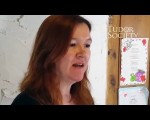
For this week’s Claire Chats I wanted to share with you a video I’ve just made for my “Tudor Cooking with Claire” series. I love ginger and so was interested to find various mentions of “ginger bread” in medieval and Tudor recipe books and to find that it really was ‘gingered bread’.
[Read More...]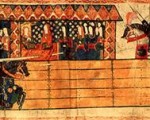
]During a jousting event on this day in history, 24th January 1536, Henry VIII fell from his horse and in full armour was crushed under the weight of the animal. Eustace Chapuys, ambassador to Charles V wrote:
“On the eve of the Conversion of St. Paul, the King being mounted on a great horse to run at the lists, both fell so heavily that every one thought it a miracle he was not killed.”
Many articles and even whole books have been written about this fateful event and how such a traumatic experience, both physically and psychologically, may have permanently changed the King’s mental stability. This article, however, instead explores a little of the history of the joust and why Henry VIII was such a fervent lover of the sport.
[Read More...]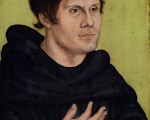
On 3rd January 1521, Pope Leo X issued the papal bull Decet Romanum Pontificem which excommunicated Martin Luther from the Catholic Church. Martin Luther was a German priest, professor of theology and most famously a reformer. His life and his beliefs changed the face of religion throughout Europe and saw many people break with the Catholic Church in the 16th century.
Martin Luther was born on 10th November 1483 in Eisleben, Saxony (part of the Holy Roman Empire at the time), to Hans and Margarethe Luther. The following year Hans moved his family to Mansfeld where he owned a series of mines and smelters. At the age of seven, Luther started at Mansfeld School. At the age of fourteen, Luther went to Magdeburg before returning to Eisleben to complete his studies in grammar, rhetoric and logic. It is reported that Luther hated his time studying at Eisleben. At the age of nineteen Luther attended the University of Erfurt where he received his master’s degree in 1505.
[Read More...]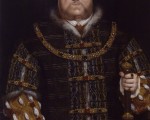
On 30th December 1546, Henry VIII signed his last will and testament, authorising changes he’d instructed William Paget to make on his behalf on 26th December 1546.
You can find a transcript of Henry VIII’s will from Letters and Papers below, but I’d highly recommend Suzannah Lipscomb’s book The King is Dead as it guides the reader through the last few months of Henry VIII’s death and argues that Henry was in control right to the end and that his will reflected his wishes and not those of the Reformists surrounding him. It is a wonderful read and also contains a transcript of the will.
[Read More...]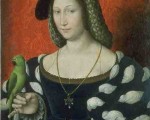
Marguerite de Navarre, also known as Marguerite d’Angoulême, was born on 11 April 1492 and died on 21 December 1549. She was sister to Francis I of France and queen consort of Henri II of Navarre. Most importantly, Marguerite was a brilliant mind and an author.
Marguerite’s early life was spent in Cognac and Blois, and was joined by her little brother, the future Francis I of France, in 1494. Sadly, Marguerite’s father, Charles d’Angoulême, passed away in 1494. Much the benefit of the precocious Marguerite, her mother was now head of the household and saw to it that her daughter received a proper education. Marguerite enjoyed learning about classical philosophy and also spent time carefully reading the Bible. This early intellectual training prepared Marguerite for deep, concerted critical thinking, which later enabled her in her literary career.
[Read More...]
On 21st December 1495, Jasper Tudor, 1st Duke of Bedford and 1st Earl of Pembroke, died at his manor at Thornbury at the age of around sixty-four. His entrails were buried at the parish church at Thornbury and the rest of his remains were laid to rest at Keynsham Abbey, according to the instructions he left in his will of 15th December.
[Read More...]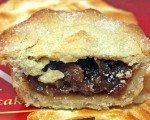
During the Tudor period the four weeks leading up to Christmas was known as Advent and consisted of fasting and a limited range of foods which were allowed to be eaten; a tradition that is still practised by some today. Christmas Eve was particularly strict and people were not allowed to eat eggs, cheese or meat. However when Christmas day came around the Tudors were allowed to cast off the food restrictions and enjoy a lavish feast!
[Read More...]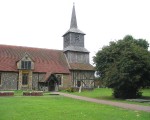
I’ve been talking about Henry VIII’s illegitimate and alleged illegitimate children in my Claire Chats videos recently so it seems appropriate to look at a woman who was the mother of the king’s only acknowledged illegitimate child, his son Henry Fitzroy, Duke of Richmond and Somerset. Over to Sarah…
Elizabeth “Bessie” Blount was the daughter of John Blount and his wife Katherine Pershall. She was born around 1498 at Kinlet Hall. Bessie’s grandmother, through her mother, had been Isabel Stanley, daughter of Sir John Stanley, a distant relative of Lord Thomas Stanley whom had married Margaret Beaufort, Henry VII’s mother. It had been Isabel’s brother Sir Humphrey Stanley whom had arranged the marriage between John Blount and his niece Katherine Pershall when the couple were only young. Sir Humphrey, while quite a rouge was also a Knight of the Body to King Henry VII.
[Read More...]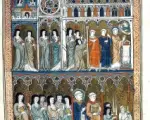
I’m excited to share news of this new online medieval history course which is now available at MedievalCourses.com and which is twenty-module course written by historian and author Toni Mount and narrated by Claire Ridgway (me!). What’s great about this course is that it is online and can be done at your own pace, so no worrying about attending classes at a certain time or missing lectures. Simply download the lectures and listen/read when it’s convenient, or listen online with streaming.
More good news is that MedievalCourses.com is offering Tudor Society members a saving off this course – scroll down to the bottom of this post for more information.
[Read More...]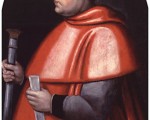
Thank you to author Sarah Bryson for this article on the Amicable Grant, a tax imposed to fund the war against France in 1525.
England had previously been at war with France in 1523 and war against the old enemy was once again proposed in early 1525. In February of that year the French troops had suffered a devastating loss against the Imperial troops of Charles V outside of Pravia. To make matters even worse for the French, their King, Francis I, had been captured in the battle and was now a prisoner of Charles V. When the messenger brought the news of Francis I’s capture to Henry VIII the King is reported to have been likened to the Archangel Gabriel, such was his happiness and excitement at hearing the news. Henry VIII, ever the opportunist, saw another chance at military glory and quickly proposed war against France. The English King believed that the idea to go to war had been blessed by God and, unlike two years previously, he had visions of reclaiming the French throne for England.
[Read More...]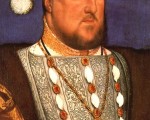
In today’s Claire Chats I discuss Ethelreda Malte, the theory that she was fathered by Henry VIII and the evidence used to back up the theory.
[Read More...]
In today’s Claire Chats I continue my series on those said to be illegitimate children with a look at Henry Fitzroy, Duke of Richmond and Somerset, who Henry VIII did acknowledge as his son, and his half-sister (or maybe sister) Elizabeth Tailboys.
[Read More...]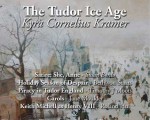
Happy Christmas Tudor Society Members!
Unless you’re one of our many Australian or South American members, December can be a very cold month indeed. What better way to keep out the damp and the wind than snuggling up with our December Tudor Life Magazine. It’s full of Christmas and festive themed articles, and this month we also have some food related sections too … all to help you survive the weather, where’er you are.
[Read More...]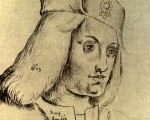
On 23rd November 1499, Perkin Warbeck faced his death at Tyburn. He was sentenced to be hanged until he was dead. His crime was attempting to escape the Tower of London where he was held a prisoner, but his story goes back several years and involves a tale of deception, treason and rumours of a young Prince come back to life!
[Read More...]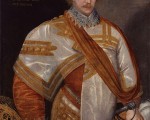
On this day in 1563, Robert Sidney, 1st Earl of Leicester, courtier, patron of the arts and poet, was born at Penshurst in Kent. Sidney was the second son of Sir Henry Sidney and his wife, Mary (née Dudley), daughter of John Dudley, Duke of Northumberland.
[Read More...]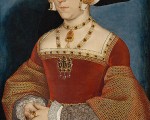
On 12th November 15371, Jane Seymour’s body was taken by chariot from Hampton Court Palace to Windsor Castle. The chariot was followed by a procession led by the Duke of Suffolk and the Marquis of Dorset. Jane’s stepdaughter, the Lady Mary, acted as chief mourner in the procession and the service, which was held at St George’s Chapel on arrival at Windsor. A solemn watch was kept that night, and then Jane was buried on the morning of the 13th November. Queen Jane had died on 24th October, probably from puerperal (childbed) fever, just twelve days after the birth of her son, the future Edward VI.
[Read More...]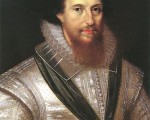
Robert Devereux, 2nd Earl of Essex, was born on this day in history, 10th November 1565, at Netherwood, Herefordshire. Devereux was the eldest son of Walter Devereux, 1st Earl of Essex, and Lettice Knollys, granddaughter of Mary Boleyn, and was a favourite of Elizabeth I. After his father’s death in 1576, William Cecil, Lord Burghley, was made his guardian, and in 1578 his mother married his godfather, Robert Dudley, Earl of Leicester.
Essex first caught the Queen’s attention in 1584 when his stepfather, Leicester, brought him to court, and he was appointed Master of the Horse on his return to court after successful military service in the Netherlands with his stepfather. He was just twenty-one, and the Queen was fifty-three.
[Read More...]